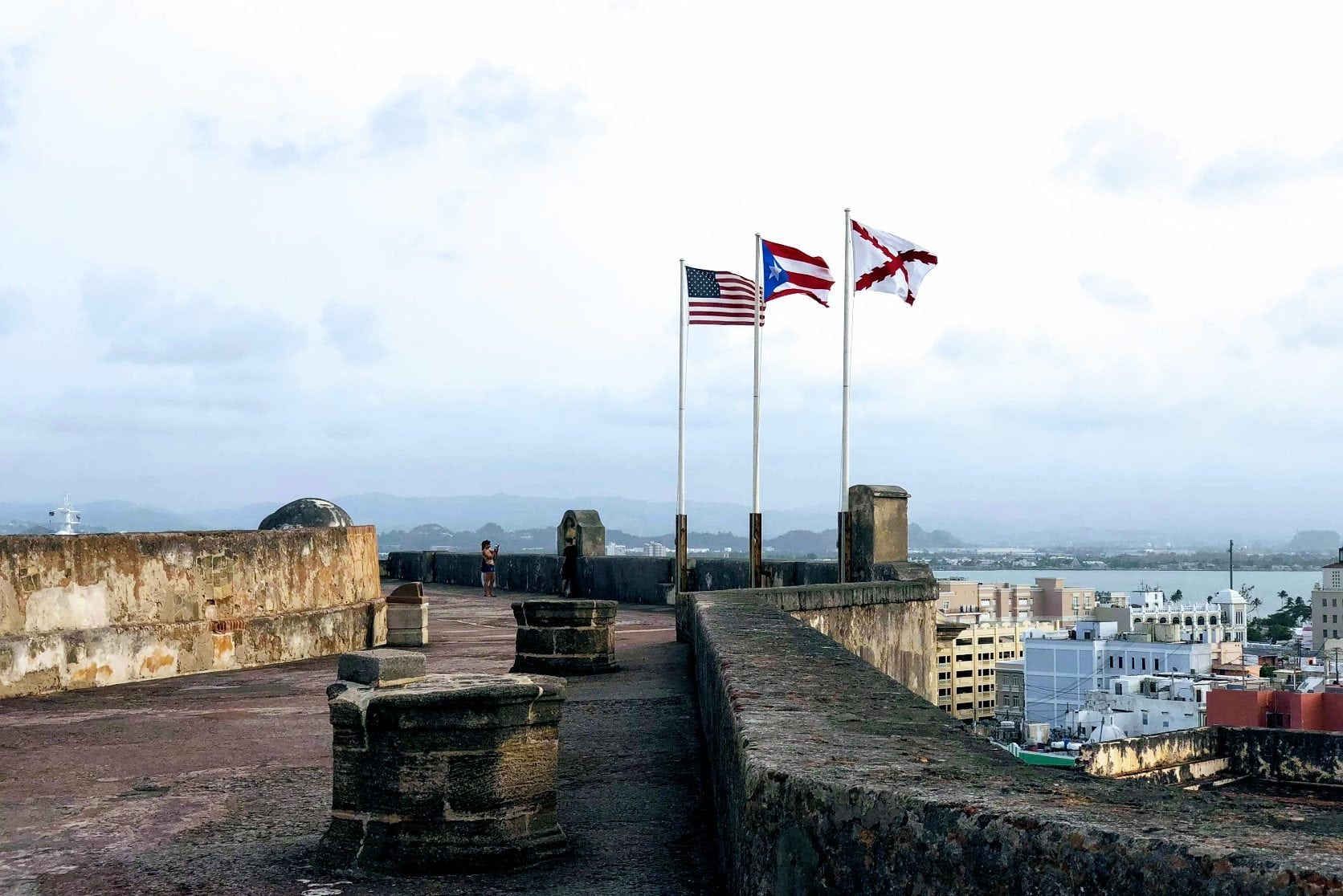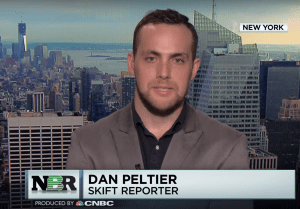Skift Take
Find out how Skift picks, creates, and polishes its stories with our team's own greatest hits list. Here's hoping you enjoy reading these stories as much as we liked reporting and writing them.
We recently published “25 Travel Moments That Mattered in 2018,” which highlights some of the outstanding work Skift’s team of editors and reporters did this past year. And as always they delivered great insights. As an added bonus for you, we asked those same journalists to give us their favorite stories from the previous year. Of course, asking a reporter to identify a favorite story is akin to asking a parent to name a favorite child, but we managed to extract a list from our team. We hope you find it informative as they tell us how the stories came to be, and why they are proud of the work. I am. What you’ll read below is the result of hours upon hours of hardcore reporting, analysis, and thoughtful writing. These are the smartest voices on global travel in the business. We hope you find that our favorites are yours, too.
Andrew Sheivachman, Senior Editor
The Backstory: Distribution in travel is one of the least sexy but most important subjects that we cover here at Skift. The sector is dominated by online booking sites that are preferred by consumers and the big three global distribution system companies that stitch together the backend of most hotel and air ticket sales; tours and activities, though, aren’t as extremely online as the aforementioned sectors.
So my colleague Dan Peltier and I decided to take a look at the ways in which online tour and activities sales are evolving to finally become more like other verticals. What we found over several months of reporting was kind of a strange story, really: extreme fragmentation and experimentation among technology providers, all the while TripAdvisor and Viator nominally lead the industry in both transaction volume and visibility to consumers. Investors, however, see the promise of small, fast-growing technology companies addressing the problem.
There is a race to connect up the fragmented and disparate operators around the world, in a development that seems to mirror Booking.com bringing the long tail of hotels around the world online. Questions remain, though, about who will win and whether travelers will ever fully move away from booking tours when already in-destination on their trip. Sometimes it’s nice to walk around on vacation and decide which tour you want to do, even if your phone has been recommending options to you for months before your trip.
Tours and Experiences: The Next Great Untapped Market in Online Travel
Brian Sumers, Senior Aviation Business Editor
The Backstory: If you board an airplane and notice your seat is beat up, it may be tempting to blame the airline for poor upkeep. But as I learned reporting a story earlier this year at an aviation interiors trade show in Germany, the airline is most often not the problem. Nope. It’s the passengers who are harsh on nearly every surface on an aircraft.
“Every time I get into an aircraft, I always wonder, ‘Who the hell sat in here before me? What have they done? They’ve trashed it,’ said Gareth Burks, managing director of seat maker Rebel.aero told me. “As a supplier to the industry, it’s really frustrating that you get hammered by quality control. They have to be perfect on day one. You just know by day two they look probably five years old — scratched and kicked.”
As I wrote in the piece, seat-makers do what they can do passenger-proof nearly every surface. At Recaro, one manufacturer, that means trying to “simulate the whole life of the product” before items go on a plane, an executive told me. A machine might place human-style pressure on an armrest a hundred thousand times, testing whether it can hold up to the rigors of three or four flights a day for two decades. Or it might open and close the tray table repeatedly — and fast.
Said the executive: “Don’t get your fingers in between.”
The Business of Passenger-Proofing Seats and Every Other Square Inch Inside a Plane
Dan Peltier, Tourism Reporter
The Backstory: Puerto Rico was my travel highlight of the year. I’m proud to say that I traveled all over the island for this story and got to see the culture beyond the gateway of San Juan. I had reported on Puerto Rico’s tourism industry restructuring earlier in the year and knew that the Skift team would be taking our annual retreat to the island in June. This was my first time visiting Puerto Rico, and I knew that my experience would likely be overshadowed by the devastation and damage from Hurricane Maria nine months earlier.
For months, mainstream and travel trade media had been reporting on the devastation across the island. Many areas are still struggling and recovering, and to be sure, those situations need to be highlighted and reported on. But I decided to visit the island with an open mind and see for myself whether Puerto Rico was largely in ruins like some news reports would lead you to believe. What I found were varying stages of recovery and plenty of scenes and places that did not match what I had seen on TV or read about online.
The east coast of the island, where Maria made landfall, still showed signs of the destruction. But much of San Juan, where we spent most of our time, had made a lot of progress and was ready for tourism. I also was lucky enough to drive along the north and west coasts of the island one day with some colleagues. We saw homes with blue tarps instead of roofs, and many downed and thinned palm trees. But we also saw families having beach picnics and barbecues as if Maria was a distant memory. We were all reminded that, in order to report the truth of how tourism has been impacted by a natural disaster, you need to visit the place and see it firsthand.
Puerto Rico Emerges From Hurricane Maria With a Plan and New Hope for Tourism
Deanna Ting, Senior Hospitality Editor
The Backstory: It all started with an email. A tenant living in a luxury apartment complex in Kissimmee, Florida, reached out to me to let me know her concerns about her home being turned into the first of many Airbnb-branded apartments.
Immediately, I started digging. I called the apartment complex as a prospective tenant, and was told by the property manager that soon, Domain, would be the “safest bet in the whole area” when it came to renting out your unit on Airbnb. I reached out to other tenants. I reached out to the developer. What was happening — and how it was happening — began to unravel.
Two days later, the story was published. I’d hoped, unrealistically most likely, that the story would shed some light on what was happening. That it would give tenants a voice. And that it might prevent something similar from happening again.
But just four months later, it happened again. This time in Nashville. And again, I looked into what had happened. I spoke to six more tenants. And what I found was more of the same.
The opportunity to do this type of investigative reporting isn’t something a lot of travel industry trade journalists get to do. Most times, I find myself writing about marketing strategy, or mergers and acquisitions (of which there were still plenty this year). But when I get to report on stories like this, I’m reminded of one of the reasons why I wanted to be a journalist in the first place.
Tenants of New Airbnb-Branded Complex in Florida Feel Blindsided
Tenants of the Latest Airbnb-Branded Complex in Nashville Feel Blindsided
Dennis Schaal, Executive Editor
The Backstory: One of my favorite stories of 2018 wasn’t the most consequential, but the reporting process was fun and insightful. I got a tip that a metasearch startup in vacation rentals, Tripping.com, was closing shop. No one from the company would give me anything for publication and I was led to believe that my tip was totally off base.
After a dozen or so communication attempts with Tripping employees, investors and people close to the company, people started to talk. I got word that the board environment, and the relationship among some of the investors and between investors and management, was toxic. After my story went live, a former board member got in touch and told me the lead investor allegedly pressured management to burn cash to buy traffic in an unsustainable way. Another investor told me the whole thing was “a shit show.” The coup de gras occurred several months later when rival HomeToGo bought the remains of Tripping with some of the same investors participating. Seldom do you see one investors trashing one another in this matter. Just another day in startupland.
Tripping Sheds Most Staff After ‘Ugly’ Conflict Between Founders and Board
Hannah Sampson, News Editor
The Backstory: My favorite theme park will always be Disney-MGM Studios, which opened in 1989 as the third park at Florida’s Walt Disney World Resort. What’s not to love? I adored the Old Hollywood glamour, the movie-making magic, the Indiana Jones swagger, and especially the Tower of Terror … well, terror. And nevermind that the name changed to Disney’s Hollywood Studios in 2008; this Florida native is set in her ways.
But I was, apparently, rather alone in my affection. Source after source described how it was a “tough park from the beginning” or how it has “petered out” over time. While I was on a reporting trip to write about the new Toy Story Land that opened in late June, executives spoke repeatedly about their plans to “transform” Disney’s Hollywood Studios, both with the just-opened addition and a major Star Wars expansion coming in late 2019. That prompted some fun reporting — and ultimately my favorite story of 2018 — about the history of the park, the fierce competition with Universal Studios that continues to this day, and the transformation that awaits.
Star Wars Is Disney’s New Hope to Transform Its Movie-Themed Park
Patrick Whyte, Europe Editor
The Backstory: On various extended trips in my early twenties I spent a lot of time in hostels. Airbnb wasn’t around and hotels didn’t offer up the same social opportunities. So it’s been funny seeing hostels get more coverage in the media, largely because big hotel companies or private equity firms think they are now the next big thing in hospitality. I wondered what was going on and over the summer spent a lot of time talking to people in the sector to get their views on why they thought it was suddenly hot.
Back when I was traveling, there weren’t many chains – and although that is still mostly the case now, things are changing. Brands like Generator, Meininger and Safestay are growing fast. You can bet AccorHotels and Hilton will want to build scale pretty quickly as well. All this indicates that things are going to change a lot over the next couple of years. But as they do will hostels lose some of the charm that made them such interesting and different places to stay?
The Big-Money Reinvention of the Humble Hostel: A Skift Deep Dive
Raini Hamdi, Asia Editor
The Backstory: One of my favorite stories is why Traveloka’s co-founder Derianto Kusuma resigned from the company. I love its human aspect and was chuffed that I uncovered it.
How I got the Traveloka story was through a line in the official statement on his resignation, which had Kusuma saying, “Since Traveloka is undergoing a gear change…it was the right time for me to my next chapter.”
It made me suspicious, what gear change?
Since I was unable to reach Kusama, and CEO Ferry Unardi, I started searching Kusuma on the web and hit dirt when I found an article he wrote in Medium which laid bare how disillusioned he was.
As time was not on my side, I reported it, although I did wish I was able to reach them for direct comments. Traveloka has since promised an interview that I hope will answer my curiosity about that gear change, but till now I’m still waiting for the date with Unardi.
Disillusioned Traveloka Co-Founder Resigns: ‘This Game Is No Longer for Me’
Sarah Enelow-Snyder, Assistant Editor
The Backstory: Writing a 9,000-word series about the future of American road trips was a dream assignment for me. I love road trips, especially through states that most savvy travelers dismiss: Kansas, Mississippi, Idaho, what have you. People approach trip planning very differently in the interior, for example in Texas where I grew up, than they do in New York, where I currently live. It’s easy to forget this when you live in a coastal city, but travel companies can’t afford to ignore the “middle.”
Do city-dwellers spend lots of time thinking about RVs? Not really, but recreational vehicles are tremendously popular across the U.S. Many people also don’t realize that the American road trip is so alluring to so many international visitors, that companies are curating luxury packages for tens of thousands of dollars. Driverless technology is also changing the game. There’s an awful lot more to a road trip now than there was 30 years ago.
How Driving Defines Us: The Future of American Road Trips
Tours and Hotels Look for Innovative Ways to Cater to Luxury and Budget Road Trippers
Self-Driving Cars, Electric Vehicles and the Future of Hitting the Road
Sean O’Neill, Travel Tech Editor
The Backstory: My favorite story was also one of the year’s most-viewed articles: Skift’s Top Travel Startups to Watch for 2018
I know, I know: It’s not hip to like lists. But who cares. Here are three reasons why I liked this project the best.
Most other “top startup rankings” fawn over companies that have received truckloads of money. We didn’t. Funding isn’t everything.
Our list spotlighted lesser-known companies that are growing outside of the hype bubble of Silicon Valley. That was a break from what other rankings do.
Our list had surprises. During our research, we discovered many companies, and we hope our list has helped give them exposure to potential partners and investors. We didn’t give shout-outs to friends-of-friends’ companies, which would’ve been easier.
The Daily Newsletter
Our daily coverage of the global travel industry. Written by editors and analysts from across Skift’s brands.
Have a confidential tip for Skift? Get in touch
Tags: airbnb, booking.com, disney parks, expedia, puerto rico, Traveloka, tripping.com
Photo credit: Castillo San Cristóbal, also known as Fort San Cristóbal, is a fort in San Juan, Puerto Rico. Skift










